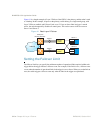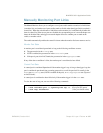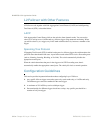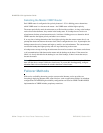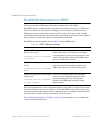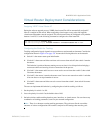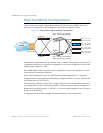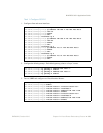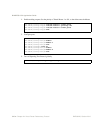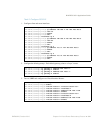
BLADEOS 6.5.2 Application Guide
334 Chapter 24: Virtual Router Redundancy Protocol BMD00220, October 2010
Selecting the Master VRRP Router
Each VRRP router is configured with a priority between 1–254. A bidding process determines
which VRRP router is or becomes the master—the VRRP router with the highest priority.
The master periodically sends advertisements to an IPv4 multicast address. As long as the backups
receive these advertisements, they remain in the backup state. If a backup does not receive an
advertisement for three advertisement intervals, it initiates a bidding process to determine which
VRRP router has the highest priority and takes over as master.
If, at any time, a backup determines that it has higher priority than the current master does, it can
preempt the master and become the master itself, unless configured not to do so. In preemption, the
backup assumes the role of master and begins to send its own advertisements. The current master
sees that the backup has higher priority and will stop functioning as the master.
A backup router can stop receiving advertisements for one of two reasons—the master can be down,
or all communications links between the master and the backup can be down. If the master has
failed, it is clearly desirable for the backup (or one of the backups, if there is more than one) to
become the master.
Note – If the master is healthy but communication between the master and the backup has failed,
there will then be two masters within the virtual router. To prevent this from happening, configure
redundant links to be used between the switches that form a virtual router.
Failover Methods
With service availability becoming a major concern on the Internet, service providers are
increasingly deploying Internet traffic control devices, such as application switches, in redundant
configurations. BLADEOS high availability configurations are based on VRRP. The BLADEOS
implementation of VRRP includes proprietary extensions.



